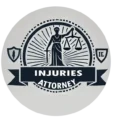Introduction: What to Expect in a Personal Injury Lawsuit
Suffering an injury due to someone else’s negligence can be overwhelming, but understanding the Personal Injury Lawsuit Process can make it easier to navigate your claim. A personal injury lawsuit allows victims to seek compensation for medical expenses, lost wages, and pain and suffering.
But how does the process work? What should you expect?
This guide breaks down each step in the personal injury lawsuit process, helping you prepare and maximize your settlement.
📖 Learn about personal injury law from Cornell Law School.
Step 1: Seek Medical Attention & Document Your Injuries
🔹 Why It Matters: Your health comes first. Getting medical treatment immediately strengthens your case by proving your injuries resulted from the accident.
Key Actions:
- Visit a doctor and follow the prescribed treatment plan.
- Keep copies of medical records, prescriptions, and bills.
- Document injuries with photos and written descriptions.
Step 2: Consult a Personal Injury Attorney
🔹 Why It Matters: Insurance companies have legal teams to minimize payouts. Having an experienced personal injury lawyer can help you negotiate a fair settlement.
Key Actions:
- Find a lawyer specializing in personal injury law.
- Ask about case strategy, fees, and expected compensation.
- Provide your lawyer with medical records and accident evidence.
📖 Find a qualified attorney from the American Bar Association.
Step 3: Investigation & Gathering Evidence
🔹 Why It Matters: Strong evidence increases your chances of winning your case. Your lawyer will investigate the accident, collect proof, and determine liability.
Key Actions:
- Obtain police reports, eyewitness statements, and surveillance footage.
- Gather pay stubs to prove lost wages.
- Work with expert witnesses (e.g., accident reconstruction specialists).
📖 Read about evidence collection in personal injury cases from Nolo.
Step 4: Filing a Personal Injury Lawsuit
🔹 Why It Matters: If settlement negotiations fail, your attorney will file a lawsuit against the at-fault party. This formally begins the legal battle.
Key Actions:
- Your lawyer prepares and files a complaint in civil court.
- The defendant (at-fault party) is served with legal documents.
- The defendant responds by admitting fault or fighting the claim.
📖 Check your state’s statute of limitations on lawsuits from the National Conference of State Legislatures.
Step 5: The Discovery Phase
🔹 Why It Matters: Both sides exchange evidence, witness lists, and depositions to build their arguments.
Key Actions:
- Participate in recorded depositions (your lawyer will guide you).
- Review opposing evidence and prepare counterarguments.
- File motions to dismiss weak evidence or request additional documents.
📖 Learn about the discovery process from the Legal Information Institute.
Step 6: Negotiation & Settlement Talks
🔹 Why It Matters: Most personal injury cases settle before trial, avoiding long and costly court battles.
Key Actions:
- Your lawyer will negotiate with insurance adjusters.
- If an acceptable offer is made, you can accept or counter the settlement.
- If no fair settlement is reached, the case proceeds to trial.
📖 Read about how settlements work from FindLaw.
Step 7: Going to Trial (If Necessary)
🔹 Why It Matters: If settlement negotiations fail, your case goes to trial, where a judge or jury determines liability and compensation.
Key Actions:
- Both sides present opening statements and key evidence.
- Witnesses and experts testify in court.
- The judge or jury delivers a verdict on fault and compensation.
📖 Learn about courtroom procedures from the American Association for Justice.
Step 8: Receiving Compensation
🔹 Why It Matters: If you win the case, you will receive compensation for medical bills, lost income, and non-economic damages like pain and suffering.
Types of Compensation:
- Economic Damages – Covers medical expenses, lost wages, and property damage.
- Non-Economic Damages – Includes pain, suffering, emotional distress, and loss of quality of life.
- Punitive Damages – Awarded in cases of gross negligence or intentional harm.
📖 Learn about different types of damages from Nolo.
Real-Life Example: A Personal Injury Case Success Story
🚗 Case Study: Car Accident Victim Wins $1.2 Million in a Personal Injury Lawsuit
- A 42-year-old man suffered severe spinal injuries after a trucking accident.
- The insurance company offered only $150,000, which didn’t cover his long-term medical needs.
- After a lawsuit and trial, the jury awarded him $1.2 million in compensation.
This case highlights why understanding the legal process and seeking expert legal representation is crucial.
Final Thoughts: Protect Your Rights After an Injury
Navigating a Personal Injury Lawsuit Process can feel overwhelming, but knowing the steps helps you prepare for each phase. From filing a claim to receiving compensation, each step is crucial in ensuring you get fair justice and financial recovery.
Key Takeaways:
- Seek immediate medical treatment and document injuries.
- Hire an experienced personal injury lawyer to negotiate on your behalf.
- Gather strong evidence to strengthen your case.
- Most cases settle, but trials may be necessary for fair compensation.
If you or a loved one has suffered injuries due to someone else’s negligence, don’t wait—consult a personal injury lawyer today to discuss your legal options.
